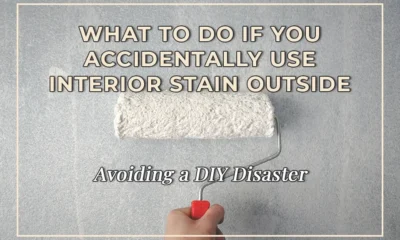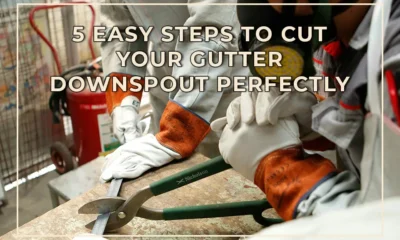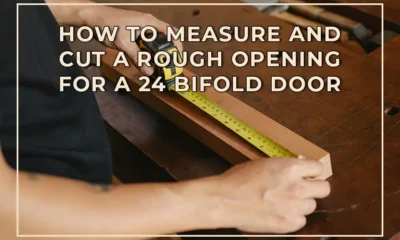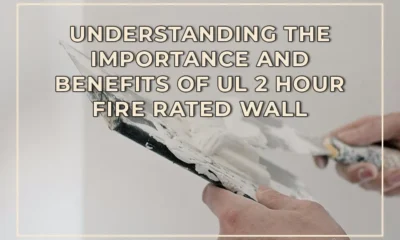DIY Closet
The Ins and Outs of Mini Split Line Set Routing: What You Need to Know
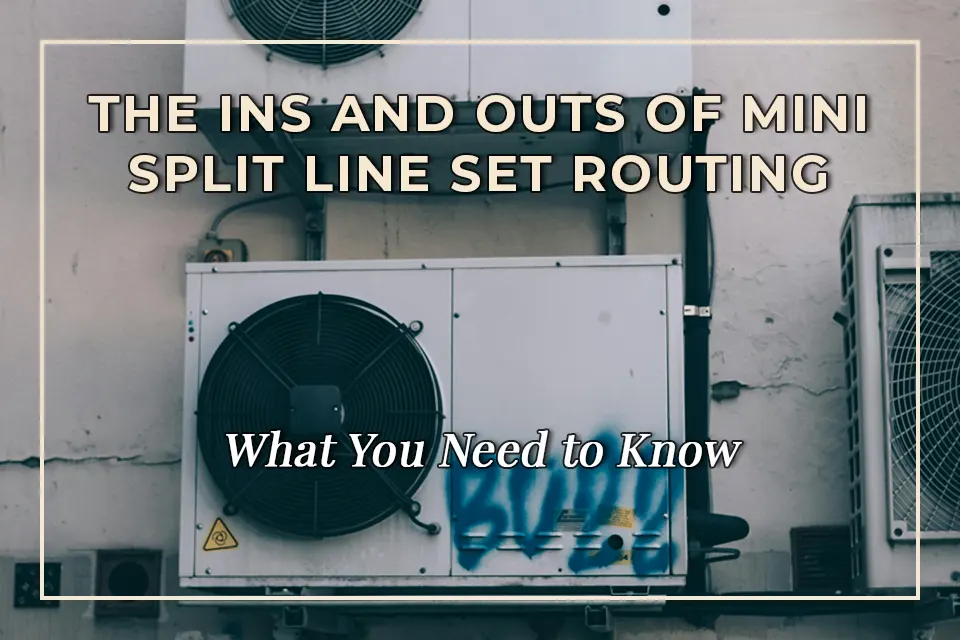
[ad_1]
In this article, we will discuss the importance of mini split line set routing, the best practices for installation, and some frequently asked questions related to this topic. Whether you are a DIY enthusiast or a professional HVAC technician, understanding the ins and outs of mini split line set routing is crucial for the efficient and long-lasting performance of your cooling system.
Why is Proper Line Set Routing Important for Mini Split Systems?
Proper line set routing is crucial for the overall performance and efficiency of a mini split system. The line set, which consists of the refrigerant tubing and electrical wiring, connects the indoor and outdoor units of the system. It is essential to route the line set in a way that minimizes any obstructions or bends that could restrict the flow of refrigerant and impede the system’s efficiency.
Additionally, proper line set routing helps to prevent any potential issues with condensation or drainage, ensuring that the system operates smoothly without any water damage or leaks. By following the best practices for line set installation, you can maximize the performance and lifespan of your mini split system.
What are the Best Practices for Mini Split Line Set Installation?
When installing a mini split system, there are several best practices to keep in mind for line set routing:
1. Keep the line set as straight and free from kinks as possible to ensure optimal refrigerant flow.
2. Avoid sharp bends or loops in the line set, as these can restrict the flow of refrigerant and impede the system’s efficiency.
3. Position the line set away from any heat sources or high-traffic areas to prevent damage and maintain optimal performance.
By adhering to these best practices, you can ensure that your mini split system operates at its best and delivers efficient cooling performance.
How Can I Route the Line Set for My Mini Split System?
Routing the line set for your mini split system involves careful planning and attention to detail. Here are the steps to follow for proper line set routing:
1. Determine the best location for the outdoor unit, taking into account the proximity to the indoor unit and the most direct route for the line set.
2. Plan the path for the line set, ensuring it is free from any potential obstructions or areas of high heat.
3. Use proper insulation for the line set to prevent any issues with condensation or moisture buildup.
By carefully routing the line set and following these steps, you can ensure that your mini split system operates efficiently and effectively.
What are Some Common Challenges with Mini Split Line Set Routing?
While proper line set routing is essential for the performance of a mini split system, there are some common challenges that you may encounter:
1. Limited Space: In some installations, there may be limited space for routing the line set, requiring careful planning and creative solutions to ensure optimal performance.
2. Obstructions: Obstructions such as walls, beams, or other structures may present challenges for routing the line set, requiring careful consideration and potential modifications to the installation.
By being aware of these challenges and working with a professional if needed, you can address any issues with line set routing and ensure the success of your mini split system.
Conclusion
Proper line set routing is essential for the efficient and long-lasting performance of a mini split system. By following best practices for installation, carefully planning the route of the line set, and addressing any potential challenges, you can ensure that your mini split system operates at its best, delivering reliable cooling performance for years to come.
FAQs
1. What is the purpose of line set routing for a mini split system?
Line set routing is important for ensuring optimal refrigerant flow, preventing obstructions and restrictions, and minimizing any issues with condensation or drainage. Proper line set routing is essential for the overall performance and efficiency of a mini split system.
2. Can I install a mini split system and route the line set myself?
While some DIY enthusiasts may have the skills and knowledge to install a mini split system and route the line set, it is important to ensure that all installation and routing practices meet the manufacturer’s guidelines and local building codes. When in doubt, it is best to consult with a professional HVAC technician for assistance.
3. What are some common signs of improper line set routing in a mini split system?
Common signs of improper line set routing may include reduced cooling performance, increased energy consumption, or issues with condensation and drainage. If you suspect that there may be issues with the line set routing, it is best to consult with a professional for an assessment and potential adjustments.
4. Is it possible to relocate the outdoor unit of a mini split system if the line set routing needs to be adjusted?
In some cases, it may be possible to relocate the outdoor unit of a mini split system if the line set routing needs to be adjusted. However, this should be done with careful consideration and planning to ensure that the new location meets all necessary requirements for proper installation and performance.
5. What should I do if I encounter challenges with line set routing during a DIY installation of a mini split system?
If you encounter challenges with line set routing during a DIY installation of a mini split system, it is best to consult with a professional HVAC technician for guidance and assistance. Addressing any issues with line set routing early on can help to prevent potential problems and ensure the overall success of the installation.
[ad_2]
DIY Closet
Expert Tips: How to Locate and Access Underground Water Lines

[ad_1]
Do you want to learn how to locate and access underground water lines? In this article, we will discuss expert tips on how to do this yourself. We will cover the tools and techniques you can use to find and access water lines on your property. Whether you need to repair them, install new lines, or just want to understand how your water system works, these tips will help you get the job done. Read on to learn more about this essential DIY skill.
What tools do I need to locate underground water lines?
Locating underground water lines requires the use of specialized tools. One of the most common tools used for this task is a pipe and cable locator. This device uses electromagnetic signals to locate metallic water lines buried beneath the ground. These locators come in different models and can be either purchased or rented from hardware stores. For non-metallic lines, a ground-penetrating radar (GPR) may be needed to locate them. This tool provides a visual image of what lies beneath the surface, allowing you to identify the path of the water lines.
Once you have located the water lines, you will need a shovel and other excavation tools to access them. Depending on the depth and location of the lines, you may also need a backhoe or other heavy machinery to excavate the area safely and effectively.
What are the techniques for locating underground water lines?
The most common technique for locating underground water lines is using a pipe and cable locator. To do this, you will need to attach a transmitter to one end of the water line. The transmitter sends electromagnetic signals through the line, which can be picked up by the receiver on the locator. By tracing the path of the signals, you can determine the location and depth of the water line.
For non-metallic water lines, using a ground-penetrating radar (GPR) is an effective technique. This tool emits high-frequency radar waves into the ground and records the reflections to create a visual image of what lies beneath the surface. By analyzing the GPR data, you can identify the location and depth of the water lines.
How do I access underground water lines?
Accessing underground water lines requires careful excavation to avoid damaging the lines. Once you have located the water lines using the appropriate tools and techniques, you will need to carefully excavate the area around the lines using a shovel and other excavation tools. It is important to dig slowly and cautiously to avoid hitting the water lines, as this could cause costly damage and potential water leakage.
If the water lines are buried deep or in a difficult-to-access location, you may need to use heavy machinery such as a backhoe to excavate the area safely. It is essential to follow local regulations and obtain any necessary permits before using heavy machinery for excavation.
How can I ensure safety when working with underground water lines?
Working with underground water lines can be hazardous, so it is essential to prioritize safety at all times. Before beginning any work, it is crucial to locate and mark any other underground utilities such as gas lines, electrical lines, and sewer lines to avoid accidental damage. Additionally, wearing protective gear such as gloves, safety glasses, and sturdy footwear can help minimize the risk of injury.
It is also important to use caution when excavating the area around the water lines to avoid hitting and damaging them. If heavy machinery is needed for excavation, it is essential to operate it carefully and follow all safety guidelines to prevent accidents and injuries.
Conclusion
Locating and accessing underground water lines is an essential skill for homeowners and DIY enthusiasts. By using the right tools and techniques, you can effectively locate and access water lines on your property, whether for repairs, installations, or understanding your water system. Prioritizing safety and following local regulations and guidelines will help ensure a successful and safe outcome.
FAQs
1. Can I use a metal detector to locate underground water lines?
No, a metal detector is not suitable for locating underground water lines. Metal detectors are designed to locate metallic objects such as jewelry and coins, and they are not capable of detecting water lines buried beneath the ground. For this task, a pipe and cable locator or ground-penetrating radar (GPR) is the appropriate tool to use.
2. Are there any risks associated with excavating around underground water lines?
Yes, there are risks associated with excavating around underground water lines. It is essential to proceed with caution to avoid damaging the lines, which could lead to water leakage and costly repairs. It is also crucial to locate and mark any other underground utilities before excavation to prevent accidental damage to them.
3. Do I need a permit to excavate around underground water lines?
Depending on your location, you may need to obtain a permit before excavating around underground water lines. Local regulations vary, so it is important to check with your municipality or local utility company to determine if a permit is required for this type of work.
4. Can I use a shovel to access underground water lines?
Yes, a shovel can be used to access underground water lines, especially for smaller-scale excavations. However, if the water lines are buried deep or in a difficult-to-access location, you may need to use heavy machinery such as a backhoe for safe and effective excavation.
5. What should I do if I accidentally damage an underground water line?
If you accidentally damage an underground water line, it is essential to act quickly to minimize water leakage and potential damage. First, shut off the main water supply to prevent further water flow. Then, contact a professional plumber or utility company to assess and repair the damage as soon as possible.
[ad_2]
DIY Closet
Avoiding a DIY Disaster: What to Do If You Accidentally Use Interior Stain Outside
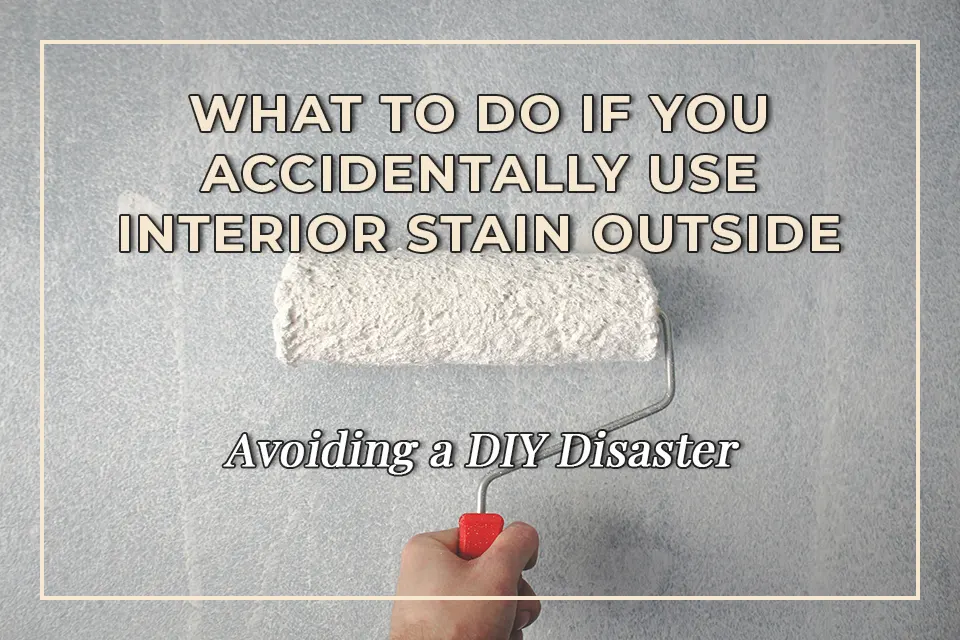
[ad_1]
Description: In this article, we will discuss what to do if you accidentally use interior stain outside. We will provide tips and solutions to help you avoid a DIY disaster and fix any mistakes that may occur.
What should you do if you accidentally use interior stain outside?
If you accidentally use interior stain outside, the first thing you should do is assess the situation. Take a look at the affected area and determine the extent of the damage. If the stain has only been applied to a small section, you may be able to remedy the situation with some simple fixes. However, if the stain has been used over a larger area, you may need to consider more extensive solutions.
Once you have assessed the situation, you can begin to take steps to fix the problem. One option is to try and sand away the stain if it is still wet. This may help to remove some of the color and reduce the impact of the mistake. If the stain has already dried, you may need to use a chemical stripper to remove it.
How can you prevent a DIY disaster when using interior stain?
To prevent a DIY disaster when using interior stain, it is important to carefully read the instructions on the product before you begin. Make sure that the stain is suitable for the surface you are working with, and that it is intended for outdoor use if you are staining an exterior area. It is also a good idea to test the stain on a small, inconspicuous area to ensure that it provides the desired result before applying it to a larger area.
Additionally, ensure that you are working in a well-ventilated area and that you are using the appropriate safety equipment, such as gloves and a mask, when applying the stain. By taking these precautions, you can minimize the risk of a DIY disaster and ensure a successful outcome.
What are some DIY solutions for fixing the mistake?
If you have accidentally used interior stain outside, there are a few DIY solutions that you can try to fix the mistake. One option is to use a wood brightener or deck cleaner to help lighten the color of the stain. This can be applied to the affected area and scrubbed with a brush to help reduce the appearance of the stain.
Another option is to consider applying a new coat of exterior stain or paint over the affected area. This can help to cover up the mistake and provide a fresh, new look to the surface. However, keep in mind that this may require additional preparation, such as sanding or priming, to ensure a smooth finish.
When should you consider seeking professional help?
If the DIY solutions for fixing the mistake are not providing the desired result, or if the damage is extensive, it may be time to consider seeking professional help. A professional contractor or painter can assess the situation and provide expert advice on the best course of action. They may have access to specialized tools and products that can help to effectively remove the stain and restore the surface to its original condition.
Additionally, if the stained surface is part of a larger project, such as a deck or fence, it may be beneficial to have a professional handle the entire refinishing process to ensure a high-quality, long-lasting result.
Conclusion
Mistakes happen, but with the right knowledge and approach, you can avoid a DIY disaster and fix any errors that occur. By taking the time to assess the situation, using DIY solutions to help remedy the mistake, and knowing when to seek professional help, you can ensure a successful outcome when using interior stain outside.
FAQs
Can I use interior stain outside?
No, interior stain is not designed for outdoor use. It is important to use the appropriate exterior stain for outdoor surfaces to ensure durability and long-lasting results.
What safety precautions should I take when using stain?
When using stain, it is important to work in a well-ventilated area and use appropriate safety equipment, such as gloves and a mask, to protect yourself from harmful fumes and chemicals.
Is it possible to remove the stain if it has already dried?
If the stain has dried, you may need to use a chemical stripper to help remove it. However, keep in mind that this process can be time-consuming and may require additional preparation and refinishing of the surface.
What type of surface preparation is needed before applying a new coat of stain or paint?
Before applying a new coat of stain or paint over the affected area, it is important to prepare the surface by sanding, cleaning, and possibly priming to ensure a smooth and long-lasting finish.
How do I know when it’s time to seek professional help?
If DIY solutions are not providing the desired result, or if the damage is extensive, it may be time to consider seeking professional help. A professional contractor or painter can assess the situation and provide expert advice on the best course of action.
[ad_2]
DIY Closet
5 Easy Steps to Cut Your Gutter Downspout Perfectly

[ad_1]
In this article, we will discuss 5 easy steps to cut your gutter downspout perfectly. Whether you are looking to replace an old downspout or customize a new one, cutting a downspout to the correct size is an essential part of the installation process. By following these simple steps, you can ensure that your gutter downspout fits perfectly and functions effectively.
What tools do I need to cut a gutter downspout?
To cut a gutter downspout, you will need a measuring tape, a marker, a hacksaw or tin snips, a file, and safety gloves. These are the basic tools required for achieving a clean and precise cut on your downspout. Make sure to work in a well-lit area and take necessary safety precautions when using sharp tools.
First, measure the length you need for your downspout and mark the cutting line using a marker. Use a measuring tape to ensure accurate measurements and a straight-line mark. Next, use a hacksaw or tin snips to cut along the marked line. Once the downspout is cut, use a file to smooth any rough edges and remove any burrs. Always wear safety gloves to protect your hands from sharp edges.
How do I ensure the downspout is cut to the correct length?
Before cutting the downspout, it is important to measure and mark the correct length. Use a measuring tape to determine the exact length required for your downspout and mark the cutting line with a marker. Double-check the measurements to ensure accuracy before making any cuts. Following these steps will help you ensure that the downspout is cut to the perfect length.
How can I make a straight and clean cut on the downspout?
To make a straight and clean cut on the downspout, use a hacksaw or tin snips to carefully cut along the marked line. Take your time and use a steady hand to ensure a precise cut. If using a hacksaw, use a miter box to guide the saw and keep the cut straight. If using tin snips, make small, controlled cuts to avoid jagged edges. After cutting, use a file to smooth any rough edges and remove any burrs, resulting in a clean and professional-looking cut.
How do I connect the downspout to the gutters and ground drainage system?
Once the downspout is cut to the correct length, you can connect it to the gutters and ground drainage system. If connecting to the gutters, use appropriate connectors to secure the downspout to the gutter system. Make sure the fit is secure and weatherproof to prevent any leaks or damage. If connecting to a ground drainage system, use a suitable elbow and extend the downspout to the desired location. Secure the downspout to the ground using straps or brackets to keep it in place and ensure effective water drainage.
How can I maintain and clean the downspout after cutting?
After cutting and installing the downspout, it is important to maintain and keep it clean to ensure optimal functioning. Regularly inspect the downspout for any debris or blockages and clear them out using a plumbing snake or pressure washer. Additionally, check for any signs of damage or corrosion and fix them promptly to prevent any issues with water drainage. By keeping the downspout clean and well-maintained, you can ensure it continues to work effectively for years to come.
Conclusion
Cutting a gutter downspout is a simple and essential part of the installation process. By following these 5 easy steps and using the right tools, you can cut your downspout perfectly and ensure it fits and functions as intended. Remember to measure and mark the correct length, make a straight and clean cut, and connect the downspout to the gutters and ground drainage system. With proper maintenance, your gutter downspout will continue to effectively direct water away from your home.
FAQs
Q: Can I use a regular saw to cut a gutter downspout?
A: While it is possible to use a regular saw to cut a gutter downspout, a hacksaw or tin snips are recommended for achieving a clean and precise cut. These tools are specifically designed for cutting metal and will result in a better finish.
Q: How do I prevent the downspout from getting clogged after cutting?
A: To prevent the downspout from getting clogged, regularly inspect and clean it to remove any debris or blockages. Consider installing gutter guards to prevent leaves and other debris from entering the downspout and causing clogs.
Q: Can I use duct tape to connect the downspout to the gutters?
A: Duct tape is not recommended for connecting the downspout to the gutters, as it may not provide a secure and weatherproof fit. Use appropriate connectors and sealants to ensure a strong and durable connection.
Q: What should I do if the downspout is too long after cutting?
A: If the downspout is too long after cutting, carefully trim it to the desired length using a hacksaw or tin snips. Remember to measure and double-check the length before making any cuts to avoid any mistakes.
Q: How often should I clean and maintain my gutter downspout?
A: It is recommended to clean and maintain your gutter downspout at least twice a year, especially before the rainy season and after the fall when leaves are more likely to accumulate. Regular maintenance will help prevent clogs and ensure proper water drainage.
[ad_2]

 DIY Closet3 months ago
DIY Closet3 months agoUnderstanding the Benefits of a 400 Amp Meter Base with Two 200 Amp Disconnects

 DIY Closet3 months ago
DIY Closet3 months agoHow to Install a Drop-In Sink Without Clips: A Step-by-Step Guide

 DIY Closet3 months ago
DIY Closet3 months agoUnderstanding the Importance and Benefits of UL 2 Hour Fire Rated Wall Assemblies

 DIY Closet3 months ago
DIY Closet3 months agoIs Your Korky Toilet Flapper Closing Too Fast? Here’s What You Need to Know

 DIY Closet3 months ago
DIY Closet3 months agoHow to Properly Store Paint Mixed with Floetrol for Longevity

 DIY Closet4 months ago
DIY Closet4 months agoE3 Spark Plugs vs NGK: Which is the Better Choice for Your Vehicle?

 DIY Closet4 months ago
DIY Closet4 months agoThe Importance of P-Traps in Bathtubs: What You Need to Know

 DIY Closet3 months ago
DIY Closet3 months ago5 Reasons Your Plunger Doesn’t Fit Your Toilet Hole










